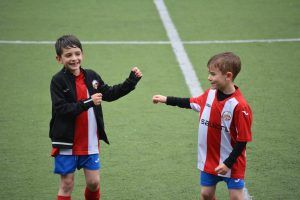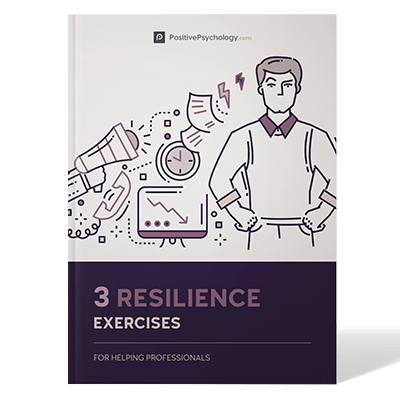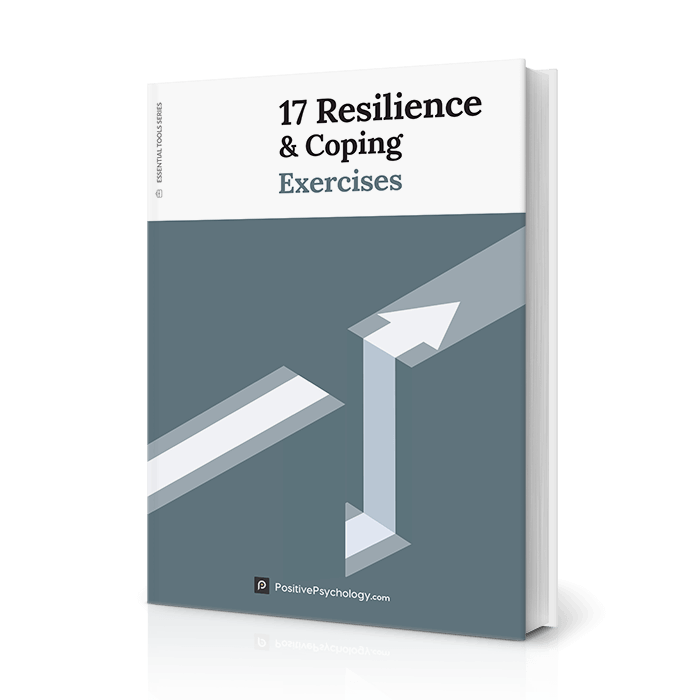Resilience in Education & How to Foster Resilient Students
 Teachers who teach resilience might change the trajectory of their student’s lives. It is not easy to teach resilience in the classroom, but it is crucial.
Teachers who teach resilience might change the trajectory of their student’s lives. It is not easy to teach resilience in the classroom, but it is crucial.
Teaching resilience is beyond memorization, calculation, and other traditional learning methods. It requires interaction and engagement.
Resilience is about the process of becoming, which children understand once they develop a firm belief about their place in the world.
When students believe that they are worthy and capable of overcoming challenges, they become resilient. But how do teachers teach this belief in the classroom?
We’ve written another article on the topic of resilience if you want to begin with a deeper understanding of its relevance. The article also has great resources, including videos and exercises, to explain the importance of this concept.
If you are ready to delve into the classroom, continue reading on how to shape resilient learners in school, and thereby shape students who are not afraid of a challenge.
Before you read on, we thought you might like to download our three Resilience Exercises for free. These engaging, science-based exercises will help you to effectively deal with difficult circumstances and give you the tools to improve the resilience of your students, clients, or employees.
This Article Contains:
Fostering Resilient Learners
Humans need other humans to shape our beliefs and identity.
As Aristotle once wrote, ‘man is a social animal.’ Even today, social sciences agree that most of our beliefs, behaviors, attitudes, rituals, and ideas, are shaped by our surrounding social world.
Besides the social norms we adopt, the stories we tell ourselves also determine our life perspective. Personal beliefs, towards ourselves and what we view as possible, are made solid by the narratives we hold true. We can think of this as the narrative of “I” inside of our heads.
Our identity exists at the intersection of these personal narratives and our social reality.
Childhood molds a lot of our core ideas and habits. Every interaction or relationship has an impact on us, including dynamics between parents, close relatives, siblings, and teachers.
How a student responds emotionally to a situation may be a relic of childhood experiences. Because of this, traumatic scenarios in childhood can have large consequences in adulthood.
This also applies pressure to parenthood, and cultures differ in expectations of how parents might respond to stressors. Parental beliefs about whether the world is a safe place, or whether others are trustworthy, can also shape how children experience situations.
Parenting culture and resilience
Culture, like parenting, influences the formation of resilience in children. Additionally, norms and social constructs define specific parameters that either maximize or minimize a child’s potential for wellbeing, success, and happiness.
For one example researched by Gonzales et al. (2008), many Mexican families living in the U.S. carry a deep cultural notion of familism. This places a high value on the family as a unit and the obligations that an individual owes their family.
According to the authors, these tight-knit familial networks “serve as a buffer against adverse social circumstances.” This protects Latinx youth from the adversity they may face as a person of color in certain areas in America.
These familial bonds provide strength and foster resilience among individuals.
Not all socio-cultural factors build resilience however, like Reyes, Elias, Parker, and Rosenblatt (2013) articulate. This recent shift shows how in the U.S., for example, the rise of ‘helicopter’ and overprotective parenting, may inhibit personal growth.
Childhood norms have also changed dramatically since the 1970s (Rosin, 2014). Overall, parenting styles that would have been deemed paranoid, now appear normal.
Today, ‘overparenting’ is often viewed as “good, responsible parenting.” According to Locke, Campbell & Kavanagh, overparenting is a serious concern (2012).
What causes this shift towards overparenting? As Locke, Campbell & Kavanagh cite, the widespread belief that the modern world is more dangerous fuels the increasing trend of overparenting. Media-blasted cases of child abduction also do not alleviate parental concern.
Increased parental anxiety is also explained by the changes in the American family and its communities. The prevalence of divorce, women in the workforce, single-parent families, and the frequent moving of homes, has changed the trust within neighborhood social structure.
Rosin calls this change a ‘loss of cohesion,’ which may explain why parents compensate by over-parenting (2014).
With the shift in neighborhood and family structure, parents have “sought to control more closely what they can – most of all, their children” (Rosin, 2014).
Children in the past had more responsibilities.
As Hart writes, children in the past,
“crossed the road, went to the store; eventually some of them got small neighborhood jobs. Their pride was wrapped up in competence and independence, which grew as they tried and mastered activities they hadn’t known how to do the previous year”
(Rosin, 2014).
Today, most middle-class American children are not expected to do errands independently. For many parents, it is viewed as unsafe.
As Rosin fears, when children are not treated as adults and able to spend time in the company of adults who trust them, they do not build “the confidence to be truly independent and self-reliant” (2014).
This desire to “protect” children can backfire since overparenting prevents children from navigating the outside world on their own terms.
Benoit describes overparenting (2013) among his student populations, describing how some parents would do the homework of his pupils. The parents explained that they wanted to protect their children from the stress or overwhelming nature of the work.
Even if well-intended, this overparenting attitude has counterproductive effects. Children develop learned helplessness when faced with a challenge, instead of developing coping mechanisms or confidence in their ability to negotiate a challenge.
Overparenting can crystallize in low self-esteem, confidence, anxiety, and depression.
Benoit highlights the pivotal role of teachers in tackling the issue. In fact, he argues that the fundamental duty of teachers is to teach children a resilience skillset. Benoit explains this pedagogical approach, saying,
“we teach responsibility, organization, manners, restraint, and foresight. These skills may not get assessed on standardized testing, but as children plot their journey into adulthood, they are, by far, the most important life skills I teach.”
In other words, as Marilyn Price-Mitchell (2015) articulate,
“children who develop resilience are better able to face disappointment, learn from failure, cope with loss and adapt to change. We recognize resilience in children when we observe their determination, grit, and perseverance to tackle problems and cope with the emotional challenges of school and life.”
It is therefore essential that teachers substitute for bad parenting strategies, and also implement a framework that fosters resilience.
How are children supposed to navigate the achievement-focused and competitive culture that dominates much of adulthood if they are not allowed to build this skill?
The metaphor of Kintsugi

Kintsugi means ‘to join with gold.’ It is a crafting method that consists of assembling “broken pieces of an accidentally-smashed pot” (The Book of Life, 2018).
With roots in the Zen philosophy of wabi-sabi, kintsugi celebrates imperfection.
The broken pieces of the pot are glued together with “lacquer inflected with a very luxuriant gold powder” (The Book of Life, 2018). The visible fractures are adorned with gold rather than hidden.
Symbolically, the golden cracks represent the worth of the bowl because of its imperfections rather than in spite of them. The bowl is like a human, cracked by the contingency of life.
The gold endows the pot with unassailable beauty, uniqueness, and strength. Kintsugi and wabi-sabi can teach Western culture about the process of becoming oneself.
There is a lesson for embracing failures and experiences that crack our spirit. How do we turn those life cracks into gold?
This relates back to our idea of building resilience in schools, especially for younger students who are traversing the most pivotal years of their lives.
Kintsugi means ‘to join with gold.’ It is a crafting method that consists of assembling “broken pieces of an accidentally-smashed pot” (The Book of Life, 2018). With roots in the Zen philosophy or wabi-sabi, kintsugi celebrates imperfection.
The broken pieces of the pot are glued together with “lacquer inflected with a very luxuriant gold powder” (The Book of Life, 2018). The visible fractures are adorned with gold rather than hidden.
Symbolically, the golden cracks represent the worth of the bowl because of its imperfections rather than in spite of them.
The bowl is like a human, cracked by the contingency of life.
The gold endows the pot with unassailable beauty, uniqueness, and strength. Kintsugi and wabi-sabi can teach Western culture about the process of becoming oneself.
There is a lesson for embracing failures and experiences that crack our spirit. How do we turn those life cracks into gold? This relates to our idea of building resilience in schools, especially for younger students who are traversing the most pivotal years of their lives.
7 Characteristics of Student Resilience
Resilience is misunderstood as an individual skill gained only in adulthood. It is not common to imagine responsible children who juggle their own lives.
This view of childhood and adulthood are problematic. When we perceive resilience as a trait that develops naturally in adulthood, we assume that everyone will find their strength on their own. Yet these skills do not develop without being nurtured and trained.
Hence, teachers who teach resilience in the classroom are changing many lives.
The age we might acquire resilience is not fixed, but rather, is cultural and socio-economic. For instance, Masten (2009) and Garmezy (1981) found that many African-American children from low-income households still have independence and an ‘internal locus of control.’
This was not true across other socio-economic and cultural groups and prompts further study.
Researchers Cahill, Beadle, Farrelly, Forster, & Smith (2014) have found that there are many factors of resilience. Resilience can be seen as a combination of:
- Social competence and pro-social values
- Optimism
- Purpose
- An attachment to family, to school and learning
- Problem-solving skills
- An effective coping style
- A positive self-image
When these combine into the lives of children, resilience builds. Outside of the classroom, a sports team can also teach these skillsets.
In sum, resilience operates within the social framework of daily life. It is an ability to develop positive bonds with peers, manage small challenges, and trust one’s responsibility.
Together, these traits help individuals deal with unforeseen circumstances linked to change, challenge, and adversity (Bernard, 2004). In a classroom, it is easy to notice which children have gained these attributes.
How do teachers create a classroom culture of resilience? How do we equip children and teenagers with the ability to strive in their adult lives and recover from adversity?
These questions beget further reading.
How to Teach Resilience in the Classroom?
In Western thought, we often link resilience to achievements. When we think of examples of resilience, adults and their achievements may come to mind first.
For example, we might visualize resilience with the image of a single parent of two children who always smiles despite financial stress. Maybe it is the CEO who is working seventy hours a week and still finds the energy to keep their business growing.
Indeed, children are the tabula rasa of society. Their brains are flexible and develop quickly at a young age, thanks to neuroplasticity.
This capacity to learn is also children’s biggest vulnerability: early experiences in life will shape the way they relate to others and themselves for the rest of their lives.
This is great if young experiences center around love, safety, and security.
Unfortunately, not all children have nurturing conditions. Social, cultural, racial and economic factors influence opportunities and experiences for children.
Certain family systems perpetuate undesirable behavioral patterns that might hinder a child’s development. Eventually, this can amount to social and psychological problems.
Many children become resilient when faced with adversity. But resilience does not have to stem from trauma; it can also grow from supportive home environments and classrooms.
Starting with the classroom dynamic
Classroom dynamics and teaching methods can shape a classroom culture of resiliency.
School plays a huge role in children’s lives, a setting in which they spend at least 15,000 hours on average (Rutter, Maughan, Mortimore, Ouston & Smith, 1979).
As Namka (2014) illustrates, a school may be the only haven they have. As one teenager partaking in her research acknowledges, the:
“only positive adult attention I got was in school from some of the teachers. I knew which teachers liked me and I learned more from them. At home, there weren’t any adults who were interested in me so school became my favorite place to be.”
Furthermore, Pianta & Walsh (1998) highlight how “schools have historically been the great equalizer in the American landscape – the ‘ticket out’ for youth struggling to overcome conditions of adversity and poverty.”
In the traditional school system, teachers tend to reward children when they obtain good grades or behave in an expected way.
Often, educators punish students when they do not succeed academically, or when they display an attitude deemed inappropriate.
Not all school systems operate with this “good or bad” dichotomy.
For example, the Finnish educational system is famous for its progressive educational reforms, lack of standardized forms of assessment, and individual grading of students. This holistic environment fosters equality and cooperation, as opposed to competition (Colagrossi, 2018).
While it is impossible to reform the entire American educational system, there are ways to incorporate a framework that promotes the values highlighted in the Finnish framework.
When resiliency is embedded in the classroom culture, teachers transform the lives of students.
In the past, teachers gave a lot of attention to deficit-based approaches, where disciplinary measures and punishment were used to manage behavioral problems (Cahill, Beadle, Farrelly, Forster, & Smith, 2014).
Times are changing. A new approach, influenced by positive psychologists, highlights a strength-based model, with much classroom success.
Instead of focusing on undesirable traits, teachers are asked to focus on student’s strengths, while promoting wellbeing and resilience (Cahill, Beadle, Farrelly, Forster, & Smith, 2014).
One of the overall aims of positive psychology is to allow people’s strengths and capacities to shine through their weaknesses or vulnerabilities (Seligman & Csikszentmihalyi 2000).
In the school setting, this can be achieved when the following elements are incorporated:
- A safe, stable and secure physical environment
- A psychologically safe space
- Supportive relationships and a tight-knit community
- A sense of belonging and identification
- Positive social norms
- Opportunities for skill-building, decision-making, and planning
- Social and cultural integration of the family and the community
Once combined, these elements provide an ideal context for children to thrive in the learning process—and in their social and psychological inner lives (Bernard, 2004).
A classroom culture of resiliency is not impossible.
We can learn from many examples of this concept also extends beyond the classroom.
Examples of Promoting Resilience at School
How can teachers convey the beauty of Kintsugi art to students, and the significance of the gold that emerges from the cracks of the broken pot?
The metaphor is somewhat complex to communicate with children, but there are easy ways of reinforcing positive attitudes and resilience.
It is important to remember that the objective is not about encouraging success or perfection. The purpose is to value the attempt over the outcome and challenge over victory.
Experts in the field like Namka (2014) use models before introducing a new psychological framework to a classroom. In her work, Namka helps children in classrooms and people in psychiatric hospitals with emotional, social, and vocational growth skills.
In her work, Namka relies on the following model:
- Determine which psychological skill is most useful for your group to learn
- Use a language which matches the general vocabulary of your students and their understanding of specific life issues
- Start a discussion on the concept or skill using relatable life examples that the children feel at ease discussing
- Choose a book, a video, film, activity or creative project that will give the students a practical idea as to how this skill might show in their daily life.
- Throughout the discussion, ask students to reflect on how they connect with the introduced concept. Reward students who demonstrate a clear understanding of the significance of the concept.
This approach introduces a specific psychological skillset, but there are also ways to incorporate resilience into school culture before discussing it in the classroom.
For instance, Carol Dwek (2015) urges teachers to ask students to reflect on personal growth often. He recommends the following statements and questions for teachers to ask students:
- You can control your thoughts. If you use them in the right way, you can strengthen your mind.
- Wow, that was a really good grade. You must have worked really hard to be able to achieve it.
- What have you learned today?
- What is a mistake today that you learned from?
- What were you persistent at today?
- What can you learn from this?
- What will you do the next time you are in this situation?
When asked to children on a regular basis, these questions may help students gain insight into their experiences, track their progress, and plan ahead of time. Over time, this reinforces the value of growth over the value of perfection.
The result of this process can include a sense of self-worth and independence for pupils.
As Namka (2014) also emphasizes, when the message “comes through again and again” that student’s attempts towards autonomy are met with unconditional support, then students might develop the “self-fulfilling prophecy of “someone believes in me so I must have what it takes to work out the threatening situation!”
When educators believe in their students and prioritize growth, students are able to reflect on their own progress and develop resilience.
InBrief: how resilience is built
Lesson Plans for Teaching Resilience to Students
High-quality and classroom-relevant resources abound. We’ve picked some of the best lesson plans for you, starting with a lesson plan from the organization called Reach Out.
Lesson plan from Reach Out
Reach Out, one of Australia’s online mental health organizations offers six different lessons for rethinking failure.
‘Embracing the F Word’ (‘F’ referring to failure) draws a parallel between failure and growth. Together, the six lessons aim to develop resilience.
Here is an example lesson called “Setting Goals – ‘Mastery’ and ‘Not Yet’ Tracking” (p. 38):
Duration: 50 min
The main takeaway is to encourage a growth mindset where students conceptualize their educational experiences in terms of ‘mastery’ or ‘not yet’ (Carol Dweck). This approach allows students to view failure as a positive and natural part of learning.
Reach Out emphasizes that ideally, school is a space where students pursue specific skills or tasks until they have mastered them. Since not all students have the same pace with learning and developing skills, it makes sense to reward the process rather than the outcome.
Unfortunately, constraints with time and student numbers make this difficult. But even starting the process of working towards mastery can build resilience.
Key messages for students (by the end of the lesson):
- ‘Mastery’ and ‘not yet’ are measures that can be used to assess one’s competence in a specific domain. Until mastery is achieved, we are always in the ‘not yet’ phase. That doesn’t mean that we have failed, but rather that we need to push and learn more in order to improve our performance.
- Insight and a shift in perspective around failure and success are key in the pursuit of any skill mastery.
- When things get difficult, others are there to help. Peers or teachers can facilitate one’s development, technique or practice.
- Learning cannot take place without failures. When others experience success, some people feel envious. However, the work and time that someone devoted to a certain skill may be less visible.
Growth-oriented questions to ask students
For teachers, responses and questions that encourage growth will help their class overcome difficult tasks and moments. Well-phrased questions may help students perceive a situation as a growth-based opportunity.
These questions include:
- What did you learn during this task? In what way was it difficult?
- Did you make any mistakes? If so, which ones?
- What skills did you have to use during this activity? Had you used any of these previously?
- If you had to start it all over again, would you do anything differently next time?
- What advice would you give a student just starting this task?
- ‘You can’t do it… yet’.
Activity 1: Opposite hands
Put the students in pairs and tell them to them to use their non-dominant hand to write words linked with mindsets backward, for the partner to guess them. Mindset words are the following: mindset, growth, fixed, yet, feedback, failing, learning.
Activity 2: Backward mapping & tracking mastery
Ask the students to complete the ‘Backward Mapping & Tracking Mastery’ worksheet (as seen below)
Activity 3: Learning pyramid
Tell the students to fill in the learning pyramid (as seen below) for them to reflect on the lesson.
Samaritans lesson plan
In addition to lessons from Reach Out, the organization Samaritans also provides material for teaching resilience in the classroom. Here is one of the lessons they offer:
Duration: 50 min
The goal of this lesson is to teach students about how challenges and resilience work together.
Teachers also gain skills on how to spread awareness that distress and hardship are shared experiences and part of being human. In the face of adversity, students also glean different coping strategies that help towards growth.
Key messages for students (by the end of the lesson):
- When facing adversity, there are in-built coping skillsets that help. These develop slowly and over time.
- When things feel like they are too difficult, or you are feeling lonely or isolated, it is important to seek and receive support.
Growth-oriented questions to ask students:
- Which coping strategies will I try to use in future challenges?
- What different concepts can I take away from this lesson?
- What are two coping strategies that someone else uses that I would like to try?
Additional tools:
- coping cards
- blank cards
- situation cards
- ‘My five’ (handout)
- room labels – helpful, harmful and useless (prepare in advance)
- “Building Resilience” film
- building resilience – film discussion point handout
- character profile cards
Activity 1:
- With your students, watch this resilience video clip. After the screening, start a student-led discussion about the movie.[be]
- Divide the students into small groups, distribute the printed out discussion points, and assign one character per group.
- The teams should work on the completion of a character profile (see handout), and focus on their assigned character from the movie clip.
- While doing this, encourage the group to think about what the character can do to build resilience, and what they might advise them to do if they were friends.
- When completed, ask one team leader to volunteer and share with the group’s reflections with the rest of the class.
Activity 2:
- On a piece of paper (or even colorful sticky notes), ask students to write any challenging situations that come to mind.
- Let students know in advance that these sticky notes will be collected and placed on the board.
- Collect these notes and stick them on the board.
- Read them out loud and ask the students what they would do if exposed to that situation or problem.
- Then, take the coping cards and distribute either one or two as well as a blank card to each student. Tell the students that on the blank card they can add their own ideas. Among the three, tell the students that they should choose one to hold up where everyone can see it.
- In the room, label three areas as helpful, harmful or useless.
- One by one, read the situations that the students wrote on the notes.
- Ask students to move to the labeled areas that best fit the chosen coping strategy they selected.
- Once students are spread out in different areas of the classroom, ask students one by one to discuss why they believed that their position was the best one to choose.
- Compare the different ideas and thoughts that students offer.
- As Samaritans point out, you can also ask the following growth-oriented questions:
- Who thinks that one coping strategy isn’t enough?
- What would render a coping method harmful or useless?
- What should we take into account when considering how we are coping?
- How can one find out if the chosen coping strategy is helping?
- What things may ‘get in the way’ and prevent us from adopting the most helpful strategy?
- Is what is helpful the same as what is the easiest option?
- Is it always easy to find out which approach is helpful in a given situation?
- Try to think of an example where this may prove to be difficult.
- How could this difficulty be overcome?
Lecture:
- To build resilience, individuals need a set of coping abilities that allow them to confront adversity when it arises and keep a sense of harmony in their lives.
- You can incorporate some examples and the ideas that emerged from the video clip you watched.
- Sometimes, a belief in one’s ability to cope is not enough. Specific plans and strategies are necessary to deal with unexpected hardship and stress.
- These plans can serve as a toolkit that helps us find our best approach to handle challenges.
A Hundred Activities for Teaching Resilience
If you’re looking for activities that will help you teach resilience to your students, you are in luck. There are fantastic resources out there that are tailored to the needs of specific age groups.
Additionally, Lynne Namka has over a hundred activities for instilling resilience in classrooms in a fun and dynamic way. The previous link offers many activities from her website that can be found from pages 30 to 167.
Namka’s activities fit the format of an A4 page. They also outline an objective, discussion, activity, helper words, and tips. These also contain a range of age-appropriate materials (such as videos and mindfulness exercises) that can solidify the concept of resilience to children.
Lastly, Namka’s work has inspirational and colorful quotes that can be printed out and distributed freely, or hung on the classroom’s walls.
After all, a classroom culture of resilience is a classroom culture of growth and strength.
Specific Resilience Programs for Schools
Outside of the classroom, entire schools can foster a culture of resilience.
School-wide programs can build positive social norms and generate a sense of connectedness between teachers, peers, and the academic goals of the school.
This systemic approach aligns with a philosophy within positive psychology that change is also needed at the school level, and not solely in classrooms.
School-wide programs usually involve skill training for parents and teachers. Most programs have the same goal in mind, but they may differ in their methods and focus. Furthermore, programs tend to be country-specific. Before enrolling in one, make sure you find the right one for your school within close geographical proximity.
If you cannot find a program that would suit your locational needs, you can always try to contact one of the following organizations, and schedule skype-training sessions or consultancies.
You can also browse their websites for inspiration on developing a resilience-based model for your own school.
International resiliency program
The Realizing Resilience Masterclass© is an online course perfect for teachers, counselors, therapists, and psychologists. Highly recommended, this course will provide you with textbooks, presentations, videos – all the material you would need to teach resilience in the class, with a few other bonuses.
Resiliency programs in the United States
The Penn Resiliency program offers workshop and training courses to teachers and parents.
The program is said to teach children the skills of “assertiveness, negotiation, decision-making and coping with difficult situations and emotions and social problem-solving and relaxation” (Namka, 2014).
Resiliency programs in Australia
The Resilience Doughnut is a two-year whole-school model that includes training, development and evaluation. The main aim to “raise the wellbeing and resilience of staff, students and community.”
Adopting a systemic multilevel approach, the program offers a growth-based school climate at the heart of its curriculum.
No matter where they teach, the educators who teach resilience to students are building the next generation of powerful and confident people.
With resilience skillsets, we can learn to equate challenge with growth, and growth with living.
Resiliency outside of the classroom
What would a world look like that shared the classroom values of resilience? How do we create a culture of resiliency that thrives within and beyond the classroom walls?
Perhaps by starting with changing our classroom and school cultures, we can begin creating microcosms of perseverance through challenges.
More articles on resilience:
- Resilience in Positive Psychology: Bouncing Back & Going Strong
- How to Build Resilience with Resilience Training (+ Real Life Examples)
- 27 Resilience Activities and Worksheets for Students and Adults (+ PDFs)
We hope you enjoyed reading this article. Don’t forget to download our three Resilience Exercises for free.
- Cahill, H., Beadle, S., Farrelly, A., Forster, R., & Smith, K. (2014). Building resilience in children and young people: A literature review for the Department of Education and Early Childhood Development (DEECD). Melbourne, Victoria: Department of Education, Victoria.
- Colagrossi, M. (2018). 10 reasons why Finland’s education system is the best. Retrieved from https://bigthink.com/mike-colagrossi/no-standardized-tests-no-private-schools-no-stress-10-reasons-why-finlands-education-system-in-the-best-in-the-world
- Dwek, C. (2015). A GROWTH MINDSET. The Joy and Power of Reading.
- Gonzales, N. A., Germán, M., Kim, S. Y., George, P., Fabrett, F. C., Millsap, R., & Dumka, L. E. (2008). Mexican American adolescents’ cultural orientation, externalizing behavior and academic engagement: The role of traditional cultural values. American Journal of Community Psychology, 41(1-2), 151-164.
- Lahey, J. (2013). Why Parents Need to Let Their Children Fail. Retrieved from https://www.theatlantic.com/national/archive/2013/01/why-parents-need-to-let-their-children-fail/272603/
- Locke, J. Y., Campbell, M. A., & Kavanagh, D. (2012). Can a parent do too much for their child? An examination by parenting professionals of the concept of overparenting. Journal of Psychologists and Counsellors in Schools, 22(2), 249-265.
- Namka, L. (2014). Lesson Plans for Teaching Resilience to Children. Talk, Trust & Feel Therapeutics: Arizona.
- Pianta, R. C., & Walsh, D. J. (1998). Applying the construct of resilience in schools: Cautions from a developmental systems perspective. School Psychology Review, 27(3), 407.
- Price-Mitchell, M. (2015). Does Your Classroom Cultivate Student Resilience?. Retrieved from https://www.edutopia.org/blog/8-pathways-cultivate-student-resilience-marilyn-price-mitchell
- Reyes, J. A., Elias, M. J., Parker, S. J., & Rosenblatt, J. L. (2013). Promoting educational equity in disadvantaged youth: The role of resilience and social-emotional learning. In Handbook of resilience in children (pp. 349-370). Springer, Boston, MA.
- Rosin, H. (2014). The Overprotected Kid. Retrieved from https://www.theatlantic.com/magazine/archive/2014/04/hey-parents-leave-those-kids-alone/358631/
- Rutter, M., Maughan, B., Mortimore, P., Ouston, J., & Smith, A. (1979). 15,000 hours: Secondary schools and their effects on children. Shepton Mallet: Open Books.
- Seligman, M. E., & Csikszentmihalyi, M. (2000). Positive psychology: An introduction (Vol. 55, No. 1, p. 5). American Psychological Association.
- The Book of Life. (2018). Kintsugi. Retrieved from https://www.theschooloflife.com/thebookoflife/kintsugi-2/
Let us know your thoughts
Read other articles by their category
- Body & Brain (49)
- Coaching & Application (57)
- Compassion (26)
- Counseling (51)
- Emotional Intelligence (24)
- Gratitude (18)
- Grief & Bereavement (21)
- Happiness & SWB (40)
- Meaning & Values (26)
- Meditation (20)
- Mindfulness (45)
- Motivation & Goals (45)
- Optimism & Mindset (34)
- Positive CBT (28)
- Positive Communication (20)
- Positive Education (47)
- Positive Emotions (32)
- Positive Leadership (18)
- Positive Parenting (4)
- Positive Psychology (33)
- Positive Workplace (37)
- Productivity (16)
- Relationships (46)
- Resilience & Coping (36)
- Self Awareness (21)
- Self Esteem (38)
- Strengths & Virtues (32)
- Stress & Burnout Prevention (34)
- Theory & Books (46)
- Therapy Exercises (37)
- Types of Therapy (64)







What our readers think
Most of this material I have read are efforts as teacher I already do on a daily bases.
Thank you!
useful and educative
Brilliant article. Thank you 🙂
Good insight/information to teach resilience . My question is ,who is responsible to teach this lessons?
The classroom teacher or the school counselor?
A PD on this will be great. Will you be willing to come to KY JCPS for summer PD?
Nice and educative